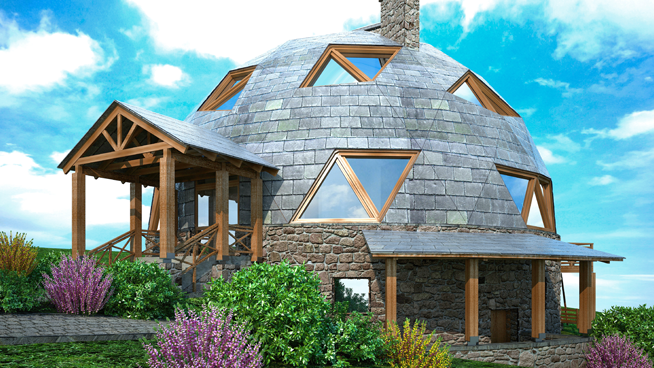
By Ken Calverley and Chuck Breidenstein
DETROIT, June 10, 2021 ~ There you are. Sitting in your living room and staring at the four walls, wondering. “Should we build that new sunroom, add that new deck, go ahead with the master bedroom conversion?”
People often ask, “Where are the costs in a construction project?” There are literally hundreds of costs associated with running any business and corresponding cost categories for each, but in construction we have five main cost categories that include materials, held or in-house labor, subcontract work, business “hard” and “soft” costs and money.
There are many costs to construction.
Contractors work hard to control all costs on a daily basis. A framing contractor will generally pre-negotiate prices on lumber with guaranteed volume purchases. A siding or roofing contractor will do the same with shingles or any product they purchase in volume. But this crazy economy has seen the price of all materials escalating almost daily.
Held or in-house labor refers to the cost of employees that work exclusively for the contractor. In this economy the competition for good employees is driving this cost up. For the employer, there is the wage being paid to the employee. But there are added costs we call “labor burden” that can double or triple this wage cost. These include items like fringe benefits, insurance, “lost” time, government contributions, etc. Lost time might refer to everything from paid time off to the cost of re-doing a task, to lost or damaged PPE or the cumulative effect of an extra ½ an hour per day smoking or chatting around the proverbial water cooler.
That ½ hour per day alone translates to 125 hours a year. A $20 per hour employee with a labor burden of 2.5 would thus cost the company about $6,250 a year in lost revenue!
Sub-contractors, like HVAC companies or plumbers or electricians, usually “bid” work for contractors that include everything the sub will do and everything they will furnish. These “lump-sum” bids are also subject to the whimsy of the economy. If the cost of pipe goes up, the plumbing bid will be higher. In this economy it is a daily crapshoot.
Business hard and soft costs refer to literally everything the company must pay for to conduct business, from paperclips to building permits. Hopefully there is a profit component “tacked” on to these to justify all the risk. In a business culture such as this, we often see company’s inadvertently “eat” profit up by not properly managing the other costs we have discussed. One of our team partners spends more than $5,000 per month just on shoe covers to protect your floors!
A cost many do not consider is money. You are sitting down reading this article right now. If you have a single dollar in your pocket, ask yourself what it cost you to get it there? You worked 40 hours last week and received a paycheck with all kinds of deductions from your salary/hourly wage. On top of that you have to drive your car to work and you have to dress for work, both of which cost you a lot of money. Any childcare involved?
That $1 in your pocket may well have “cost” you anywhere from $1.25 to $1.50 or more.
Here’s the point. In this mixed up building economy, the one cost variable that has remained “cheap” by comparison is the cost of money. This is not a philosophical discussion on whether you should ever borrow money versus paying for everything with cash in hand. It is a factual truth that the no-interest four-to-seven year loans being offered by many team partners for needed home improvements is a great deal!
Stay away from any product with high fees whether dealer fees or per-loan fees or weird pre-payment penalties. A good CFP or CPA can likely best advise you and we suggest you seek their counsel.
If our analogy above holds, a $20,000 roof project might either “cost” you $25,000 using after-tax cash in hand or actually less than $20,000 over five years due to the devalued cost of money over time – a huge savings with a zero interest loan!
What if you have that cash today and invest it conservatively for the term of the loan? What if it nets you 3% on the base principle over the five years? You will have enjoyed five years of the security and beauty of a new roof while “using” someone else’s money to make more.
The Guys are certainly not financial advisors, nor are we intending to be. We do know that for most buyers, getting “price” out of the way early in the transaction can clear the way for great homeowner-contractor relationships. The inexpensive money available today is one “tool” that both contractors and homeowners should be using when it makes sense to do so. And, since the majority of homeowners have less than $1,000 in savings for unexpected expenses, low cost loan options might make sense.
One of the reasons the great companies – like our team partners at InsideOutsideGuys.com – are so very busy is due to the huge backlog of deferred home maintenance and upkeep stemming from 2008. Deferring needed work is only likely to raise the cost of that work over time. All those other cost categories we discussed earlier? They are not likely to go down in the near future.
Contractors close 18% more jobs when offering payment options. Since 92% of homeowners will seek more than one bid, it is critical to explore as many choices as you can as early as you can in the transaction. Ask your contractor what options they have available.
Many of our partners are also willing to “lock in” pricing with a commitment today for work that may not get done until this fall. Call early and invest wisely to manage those costs!
For more home improvement advice, listen to the “Inside Outside Guys” every Saturday and Sunday on News/Talk 760, WJR-AM, from 10 a.m. to noon or contact us at InsideOutsideGuys.com.
***
The “Inside Outside Guys” are published every Saturday in the Homestyle Section of The Detroit News.




